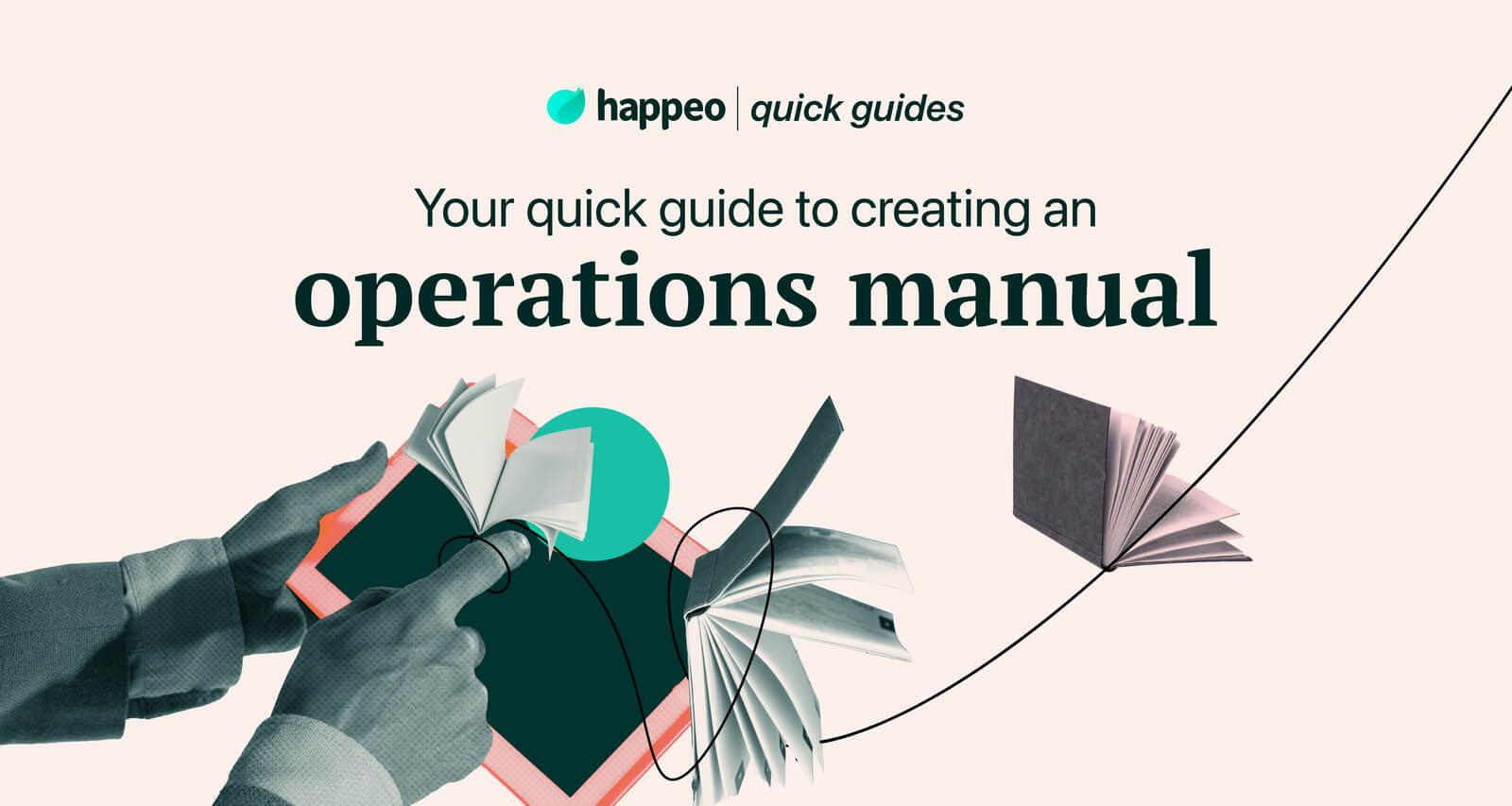
Quick guides Employee engagement
Your quick guide to creating an employee onboarding plan [incl. template]
![Your quick guide to creating an employee onboarding plan [incl. template]](https://www.happeo.com/hubfs/Happeo-Website-Assets/New/blog/Blog_97943024491_featured.jpg)
9 mins read
Start building your digital home with Happeo
Request a demoQuick guides Employee engagement
Product
Features
Solutions
Happeo for
Use cases
Resources
Explore
Support
Happeo For
Use cases
Comparisons
Explore
Support
Recent
Quick guides Employee engagement
![Your quick guide to creating an employee onboarding plan [incl. template]](https://www.happeo.com/hubfs/Happeo-Website-Assets/New/blog/Blog_97943024491_featured.jpg)

Tiia Tirkkonen
9 mins read
Starting a new job is an exciting yet daunting prospect. That’s why it should be your job as an organization to make new employees feel welcomed from day one.
The employee onboarding process is the perfect opportunity to make a good first impression, while helping the new hire get acquainted with your company, settled into their role, and prepared for success.
Employee onboarding can be defined as the procedure required to integrate a new employee into an organization. During this process, the new hire goes through a series of measures to get acquainted with the team, and learn more about the organization, its structure, culture, and values.
Steps in the onboarding process can include informal meetings with colleagues, company academy training, starting a mentorship program, and setting short term goals.
However, the employee onboarding process is much more than just a checklist. If done correctly, the onboarding process can help you avoid short term employee turnover. In fact, according to Jobvite, 20% of employee turnover happens in the first 45 days.
A successful employee onboarding process can save you time and money by helping you keep new hires in your organization for the long run. The last thing you want to do is start the recruitment process all over again. According to SHRM, 69% of employees are more likely to stay with a company for three years if they experienced a great onboarding process.
That’s because the onboarding process can boost employee engagement, improve productivity, and create a sense of ownership and responsibility in their work.
While you would assume that the onboarding process begins on the employee’s first day, it actually starts from the moment they’ve signed the contract. This is also known as preboarding: the period between an employee accepting their job offer and their first day.
Preboarding can drive excitement and curb anxiety, while also helping the employee complete all the necessary admin tasks before the official start date. Here are some of the most common preboarding activities:
Invite the new hire to an informal event to meet the team
One way to help your employee keep their new job jitters at bay is by arranging for them to meet the team in an informal setting. You can invite them to after-work drinks, a team lunch, or even for a morning coffee break. Getting to know your new colleagues before starting the job can help to ease the inevitable nerves.
Ensure all necessary HR docs and details have been collected
Before your employee’s first day, you’ll want to make sure that all contracts have been signed and all important details collected, such as a home address, bank account information, and emergency contacts. The goal of the preboarding process is to finalize all the admin tasks so that your new hire can enjoy their first week at work without worrying about the paperwork.
Send over a welcome package
While a welcome email is a nice gesture, nothing makes a new hire excited about their job quite like a welcome package. It’s also a good way to showcase your company culture, values, and perks. There’s no right or wrong answer on what to include, but here’s a starting point:
The employee onboarding process should make the new hire feel like they belong at your company. This will be their first official interaction with your organization, so you’ll want to make a positive impression.
An employee onboarding template helps to standardize the onboarding process for every new hire. Here are some things you should include in your employee onboarding process to make it a success:
Manager chat
Besides officially welcoming the new hire to the company, the first meeting with the manager should give them the information they need to succeed. This can include sharing information about policies, products or services, company apps, team structure, and job responsibilities.
In order to prepare your new employee for success, the manager should set goals and create clear expectations. If an employee knows what their first few months on the job will look like, they will be less likely to feel overwhelmed.
IT setup
Another way to set your employee up for success is by providing them with the literal tools to succeed. It’s a good idea to set up a meeting with your IT team during the onboarding process. In this meeting, your employee should receive all the physical items they need for their role. The most common company property items are:
This is also a good opportunity to give them access to their company email, apps used by your organization, and inform them about certain protocols (such as losing company property).
Individual meetings with team members
The best way for your new hire to get acquainted with the team is by arranging one-on-one meetings with colleagues. This can either be with the entire team or specific employees selected by the manager.
These meetings have two purposes. The first is to introduce the new hire to their new colleagues, while the second is to establish how the new team member can help existing employees in their day-to-day work. Encourage the new hire to ask the following questions during the meetings:
Company academy
Many organizations require new hires to participate in the company academy as part of their onboarding process. An academy is basically an in-house training program which functions as a crash course in the company’s background, what it does as a business, and the people behind it. Most company academies feature presentations from different departments, workshops, team-building exercises, and a quiz at the end.
Buddy system
New hires can benefit from more experienced colleagues who can provide a different kind of support and guidance than you’d normally get from a direct manager. That’s why some companies include a buddy or mentorship system in the onboarding process.
A buddy system pairs the new employee with a more experienced member of the team with the goal of helping the new hire adjust to their job or project. The buddy system can help in a number of ways, including:
Short term goal setting
To give your new employee some direction and create clear expectations during their first three months, you can employ the 30-60-90 day plan. A 30-60-90 day plan is an overview of a new hire’s first 90 days. It’s a course of action outlining what the new hire should accomplish from the first week to the end of the third month.
While there will be a lot of learning and work shadowing in the first month, you’ll still want your new hire to get some on-the-job training. Here are some examples of 90-day goals for different employee positions:
Schedule a 6-month and yearly check-in
It’s important to remember that the employee onboarding process is not over after the first three months. As part of the onboarding process, schedule some time with the new employee to discuss how they are finding the new role after the first 6 months. This has the benefit of creating a continuous feedback loop, while also showing your new employee that you’re invested in their success at the company.
Consider asking the following questions:
When employees come back from an extended absence such as a long holiday or medical leave or experience an internal transfer or promotion, reboarding the employee might be necessary.
Reboarding is the process required to update the employee on current and new projects, communicate goals and expectations, and facilitate meetings between team members. As reboarding employees already understand the organization's culture, values, and processes, the reboarding process is specifically geared towards helping the employee re-integrate into the team and understand their role going forward.
For example, an employee returning from medical leave may need to meet new colleagues on the team and understand the latest projects or company policy changes. Meanwhile, an employee moving to a new department will most likely need to undergo training on any new tools or processes and be given short-term goals for their new role.
Your employee onboarding process should be constantly evolving. That’s why it’s important to send an onboarding survey once the initial part of the onboarding process is complete. This is so you can see what is working well and what areas can be improved.
There are many ways to structure the survey. For instance, you could use the 5-point Likert scale for responses (e.g. strongly disagree; disagree; neither agree nor disagree; agree; strongly agree):
For more specific feedback, consider asking more open-ended questions such as “What's one thing we could have done differently to improve the first week of your onboarding experience?”
You should store the employee onboarding process in an accessible location such as your company intranet. There are a lot of moving parts when it comes to the onboarding process so you will want HR and line managers to be able to easily find and use the checklist.
If you’re interested in exploring how your employee onboarding process could become a pivotal ingredient of your company intranet, try out Happeo's employee onboarding process template.
